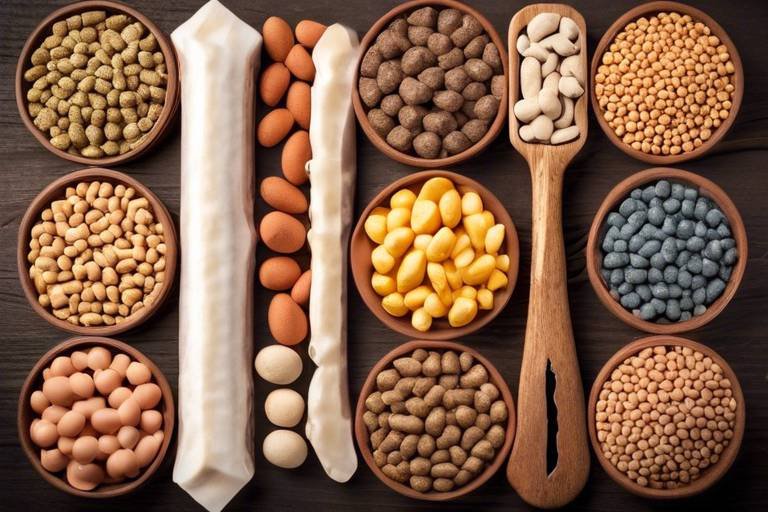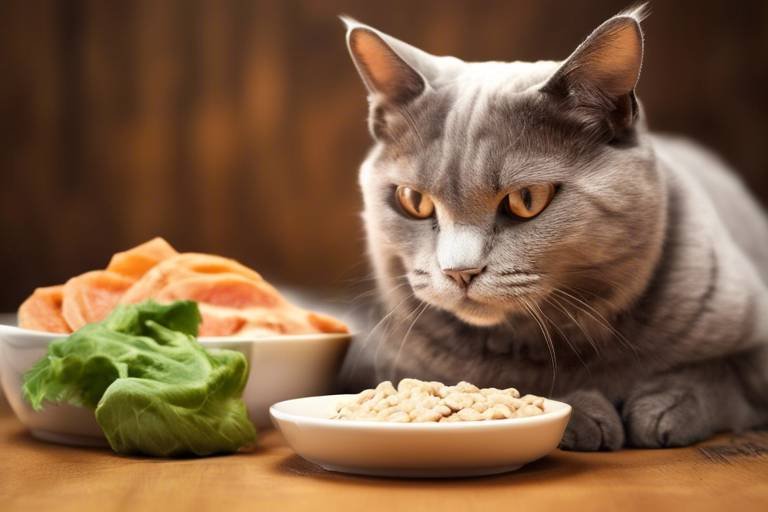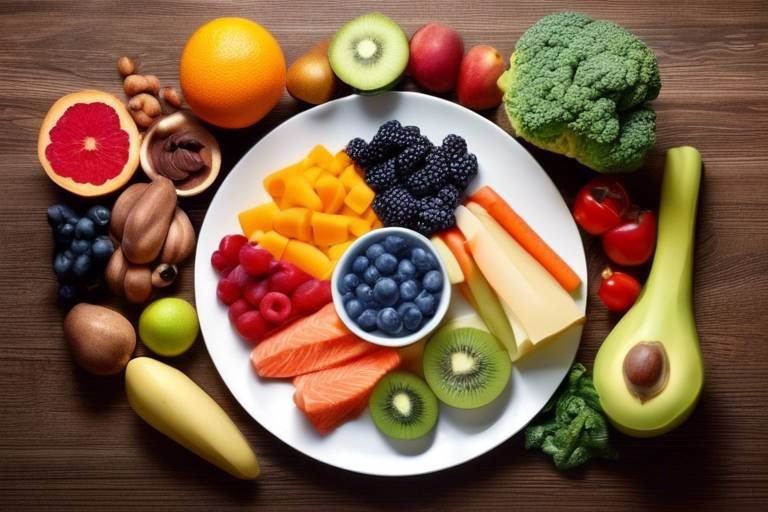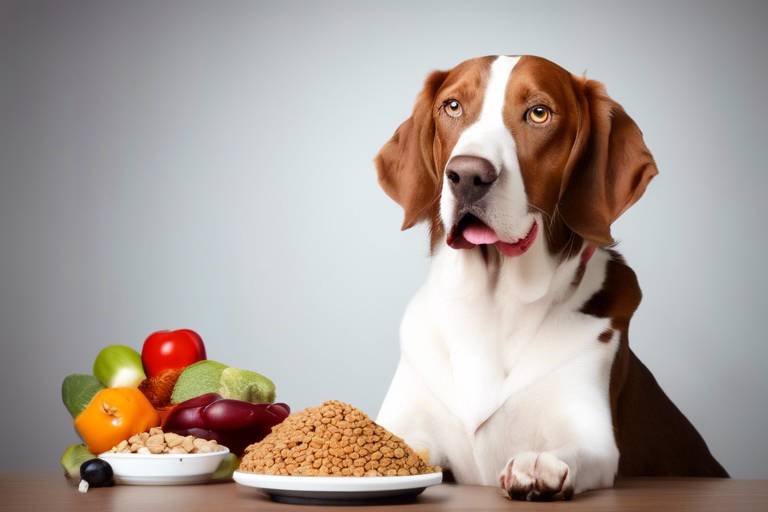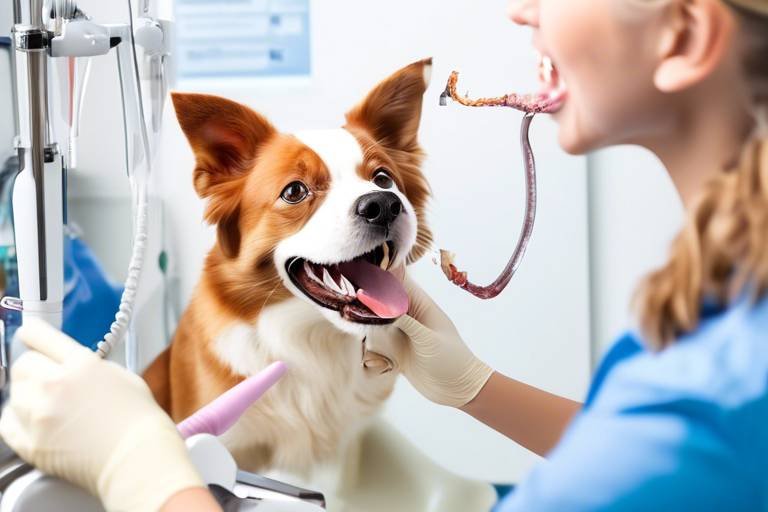The Importance of Protein Variety in Pet Diets
When it comes to our furry friends, their health and happiness are often at the forefront of our minds. One of the most crucial aspects of a pet's diet is protein, and not just any protein, but a variety of protein sources. You might be wondering, why is protein variety so important? Well, just like humans, pets need a mix of nutrients to thrive. A diverse protein intake can lead to better overall health, improved energy levels, and even a shinier coat. In this article, we will delve into the significance of protein variety in pet diets, explore different types of proteins, and provide practical tips on how to incorporate these into your pet's meals.
Every pet is unique, and their protein needs can vary significantly based on factors such as age, size, and activity level. For instance, a growing puppy will require more protein than a senior dog, while an active cat may need a different balance compared to a more sedentary one. Understanding these needs is the first step towards crafting a balanced diet. Consider consulting with your veterinarian to assess your pet's specific requirements. This will help ensure that your beloved companion receives the right amount of protein for their lifestyle.
When it comes to protein sources for pets, the options are plentiful. You can choose from animal-based proteins, plant-based proteins, or even commercial options. Each type brings its own set of benefits to the table, and incorporating a mix can lead to better health outcomes for your pet. For example, animal-based proteins like chicken, beef, and fish are packed with essential amino acids, while plant-based proteins can offer additional nutrients and fiber. Let’s break down these sources further.
Animal-based proteins are often considered the gold standard for pet nutrition. They provide a complete amino acid profile, which is vital for muscle development and energy levels. Whether it's chicken, beef, or fish, these proteins are easily digestible and are rich in essential nutrients. For instance, chicken is not only a great source of protein but also contains important vitamins and minerals that support your pet's immune system.
Fish protein, in particular, is a powerhouse of nutrition. It's rich in omega-3 fatty acids, which are known to promote healthy skin and a shiny coat. This is especially beneficial for pets that may suffer from skin allergies or irritations. Additionally, fish can support cognitive function and joint health, making it an excellent choice for both young and aging pets. So, consider adding some fish to your pet's diet for a nutritional boost!
When selecting meat for your pet, quality is paramount. Look for options that are free from fillers and artificial additives. High-quality meat not only provides better nutrition but also enhances the taste, making mealtime more enjoyable for your pet. Check labels for ingredients and opt for products that list real meat as the first ingredient. This small step can make a significant difference in your pet's health.
While animal proteins are essential, plant-based proteins can also play a valuable role in your pet's diet. Ingredients like legumes, grains, and vegetables can complement animal proteins, providing additional nutrients and fiber. For example, lentils and chickpeas are excellent sources of protein and can help maintain digestive health. However, it’s crucial to ensure that plant proteins are balanced with animal proteins to meet your pet's amino acid needs.
Finding the right balance of protein sources is essential for your pet's health. A well-rounded diet should include a variety of proteins to ensure that all nutritional bases are covered. This balance helps to prevent dietary deficiencies and promotes optimal health. Consider rotating different protein sources throughout the week to keep your pet's meals interesting and nutritious.
Creating a diverse diet involves more than just tossing in a few different protein sources. It requires careful planning and consideration of your pet's overall nutritional needs. Aim to combine various proteins in each meal, ensuring a mix of animal and plant-based options. This approach not only enhances the flavor of your pet's meals but also provides a broader spectrum of nutrients. You can even consult a pet nutritionist for personalized meal plans tailored specifically to your pet's needs.
As you introduce new protein sources into your pet's diet, it's essential to monitor their health closely. Keep an eye on changes in energy levels, coat condition, and overall well-being. If you notice any adverse reactions, such as digestive upset or changes in behavior, consult your veterinarian. Regular check-ins will help ensure that your pet thrives on their new diet.
- How much protein does my pet need? - Protein needs vary by species, age, and activity level. Consult your vet for specific recommendations.
- Can I feed my pet a vegetarian diet? - While some pets can thrive on a vegetarian diet, it's essential to ensure they receive all necessary nutrients, particularly amino acids.
- What are the signs of protein deficiency in pets? - Signs may include lethargy, poor coat condition, and muscle wasting. If you notice these symptoms, consult your vet.
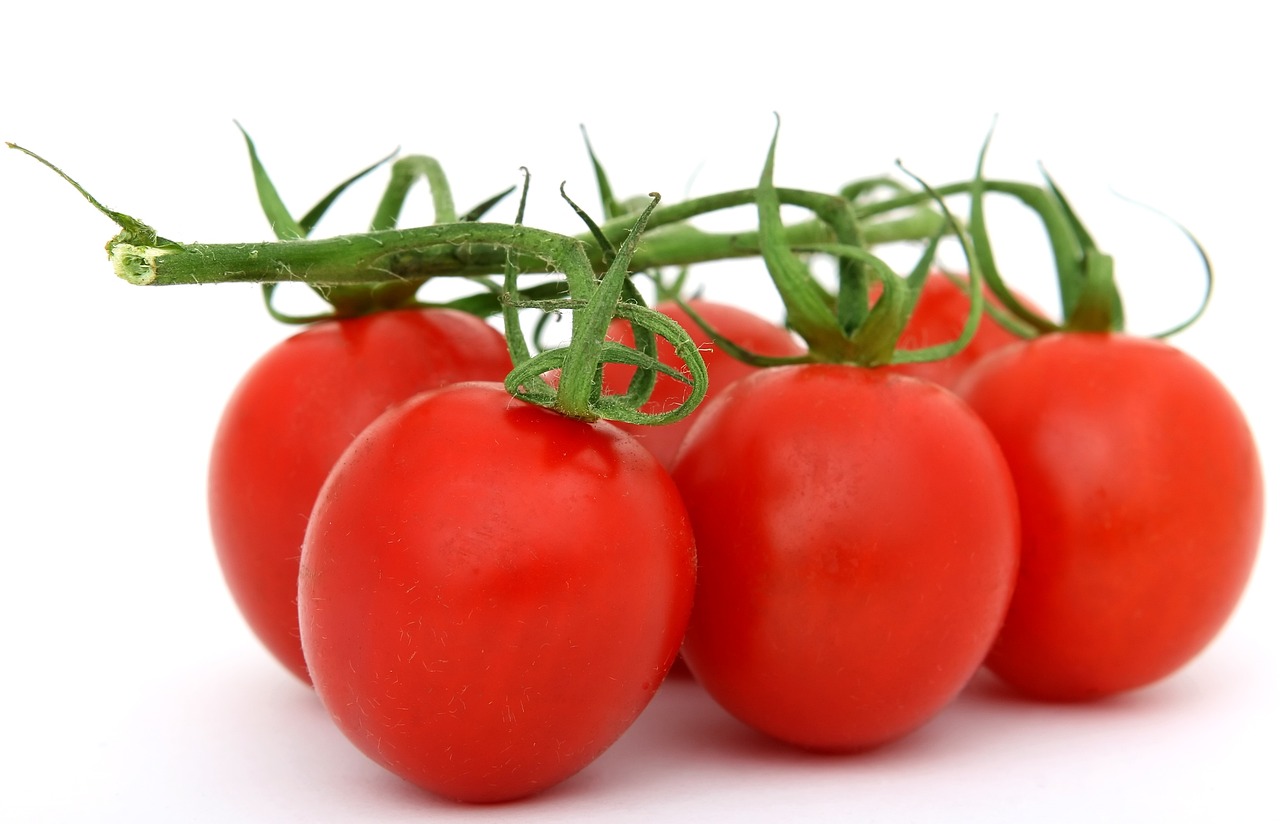
Understanding Protein Needs
When it comes to keeping our furry friends healthy and happy, understanding their protein needs is absolutely crucial. Just like humans, pets require a balanced diet tailored to their unique characteristics. But did you know that not all pets have the same protein requirements? Factors such as age, size, and activity level play a significant role in determining how much protein your pet needs. For instance, a playful puppy will require a different protein intake compared to a senior dog who prefers lounging on the couch.
To assess your pet's specific protein needs, start by considering their life stage. Puppies and kittens are in a rapid growth phase, meaning they need a higher percentage of protein in their diets to support healthy development. On the other hand, adult pets require a maintenance level of protein to sustain their energy and muscle mass. If your pet is active or working, their protein needs will increase even more, as they burn through energy quickly.
Here’s a quick overview of protein requirements based on life stages:
| Life Stage | Protein Requirement (Percentage) |
|---|---|
| Puppies/Kittens | 22-32% |
| Adult Pets | 18-25% |
| Senior Pets | 15-20% |
| Active/Working Pets | 25-35% |
To get a clearer picture of your pet's dietary needs, consider consulting with a veterinarian or a pet nutritionist. They can help you determine the right balance of protein and other essential nutrients based on your pet's specific requirements. Remember, just like us, pets can have individual preferences and tolerances. Some might thrive on a diet rich in animal proteins, while others may benefit from a mix of plant-based options.
In addition, it’s important to monitor your pet's weight and overall health regularly. If you notice any significant changes in their energy levels, coat condition, or appetite, it might be time to reassess their dietary needs. Protein is a vital component of your pet's diet, and getting it right can mean the difference between a sluggish pet and one that’s full of life and vigor!

Types of Protein Sources
When it comes to feeding our furry friends, understanding the available is crucial for their overall health and well-being. Just like humans, pets require a variety of nutrients to thrive, and protein plays a vital role in their diets. Not all proteins are created equal, and the source of these proteins can significantly impact your pet's health. In this section, we will explore the different types of protein sources, including animal-based, plant-based, and commercial options, while emphasizing the unique benefits each type brings to your pet's diet.
Animal-based proteins are often the go-to choice for many pet owners. These proteins come from meat, fish, and eggs, which are rich in essential amino acids that help build and repair tissues. For example, chicken, beef, and fish not only provide high-quality protein but also contain vital nutrients like vitamins and minerals that support your pet's immune system and energy levels. On the other hand, plant-based proteins, such as legumes, grains, and vegetables, can serve as complementary sources of protein. While they may not provide all the essential amino acids on their own, they can enhance the diet when combined with animal proteins, offering additional fiber and nutrients.
Commercial protein sources, like pet food formulations, often blend both animal and plant proteins to create a balanced diet. When choosing commercial options, it's essential to look for products that specify the quality of their protein sources. A high-quality pet food should list a named meat source as the first ingredient, ensuring that your pet is getting the best nutrition possible. Additionally, understanding the protein content in these products can help you make informed decisions. Below is a simple comparison of the different protein sources:
| Protein Source | Type | Benefits |
|---|---|---|
| Chicken | Animal | High in protein, promotes muscle growth |
| Beef | Animal | Rich in iron, supports energy levels |
| Fish | Animal | Contains omega-3 fatty acids, benefits skin and coat |
| Lentils | Plant | High in fiber, aids digestion |
| Brown Rice | Plant | Provides energy, easy to digest |
Incorporating a mix of these protein sources into your pet's diet can create a nutritionally balanced meal that caters to their specific needs. However, it's essential to consider your pet's individual preferences and any dietary restrictions they may have. Just like you wouldn't want to eat the same meal every day, your pet deserves a variety of flavors and textures in their food. This not only keeps mealtime exciting but also ensures that they receive a wide range of nutrients necessary for their health.
Ultimately, the key takeaway here is that a diverse protein intake is essential for your pet's health. By understanding the different types of protein sources available and their unique benefits, you can make informed choices that will keep your furry friend happy and healthy.
- What are the best protein sources for pets? Animal-based proteins like chicken, beef, and fish are excellent choices, complemented by plant-based proteins such as lentils and grains.
- Can I feed my pet a vegetarian diet? While some pets can thrive on a vegetarian diet, it's crucial to ensure they receive all essential amino acids and nutrients. Consulting with a veterinarian is recommended.
- How do I know if my pet is getting enough protein? Regular vet check-ups and monitoring your pet's energy levels, coat condition, and overall health can help assess their protein intake.
Animal-Based Proteins
Animal-based proteins are like the superheroes of your pet's diet. They provide essential amino acids that are vital for your furry friend’s health and well-being. Whether you have a playful puppy or a wise old cat, these proteins play a significant role in muscle development, energy levels, and overall vitality. Think of animal-based proteins as the building blocks that help your pet maintain a strong and active lifestyle. But what exactly do these proteins offer, and how can you ensure your pet gets a variety of them?
Let's dive into some popular sources of animal-based proteins:
- Chicken: A lean source of protein that is easy to digest and packed with essential nutrients.
- Beef: Rich in iron and zinc, beef supports muscle growth and energy levels.
- Fish: Not only a great protein source but also loaded with omega-3 fatty acids, which are fantastic for skin and coat health.
Including a variety of these proteins in your pet's diet can help prevent food sensitivities and promote a balanced nutritional intake. It’s essential to rotate these protein sources, just like you would change your own meals to keep things interesting and nutritious. Imagine eating the same food every day; it would be boring and might not provide all the nutrients you need. The same goes for your pets!
When selecting animal-based proteins, consider their nutritional value. For instance, chicken is not only affordable but also highly digestible, making it an excellent choice for pets of all ages. On the other hand, beef is a powerhouse of nutrients that can help build strong muscles, while fish provides those critical omega-3s that are often missing from many pet diets.
Moreover, it's crucial to choose high-quality meat. Look for options that are free from fillers and artificial ingredients. You want the best for your pet, right? Always check the labels and opt for products that list real meat as the first ingredient. This ensures that your pet is getting the protein they need without the unnecessary additives that can do more harm than good.
In summary, incorporating a variety of animal-based proteins in your pet's diet is not just beneficial; it's essential. So, whether it's the juicy chicken, hearty beef, or nutritious fish, mixing these proteins can lead to a happier, healthier pet. Remember, just like a well-rounded diet for yourself, your pet deserves the same attention and care!
Q: How much animal-based protein should I include in my pet's diet?
A: The amount can vary based on your pet’s age, size, and activity level. It's best to consult with your veterinarian for personalized advice.
Q: Can I feed my pet only one type of animal protein?
A: While pets can thrive on a single protein source, variety helps ensure they receive a broader spectrum of nutrients and may prevent food sensitivities.
Q: Are there any risks associated with feeding my pet animal-based proteins?
A: As long as you choose high-quality sources and balance it with other nutrients, animal-based proteins are generally safe and beneficial for pets.
Benefits of Fish Protein
When it comes to enhancing your pet's diet, fish protein stands out as a powerhouse ingredient packed with numerous health benefits. One of the most significant advantages of incorporating fish into your pet's meals is its high content of omega-3 fatty acids. These essential fats are not only beneficial for humans but are also crucial for our furry friends. Omega-3s help to promote a shiny, healthy coat and can reduce inflammation, which is particularly beneficial for pets suffering from skin allergies or joint issues.
Moreover, fish protein is easily digestible, making it an excellent option for pets with sensitive stomachs. Unlike some red meats, which can be heavy on the digestive system, fish provides a lighter source of protein that can help maintain optimal energy levels without causing discomfort. This digestibility factor is vital, especially for older pets or those recovering from illness.
Another noteworthy benefit of fish protein is its role in supporting brain health. The omega-3 fatty acids found in fish, particularly DHA (docosahexaenoic acid), are known to promote cognitive function and can even enhance memory in pets. This means that not only will your pet look great with a shiny coat, but they may also feel more alert and engaged with their surroundings.
In addition to these benefits, fish is rich in essential vitamins and minerals, such as vitamin D, selenium, and iodine. These nutrients contribute to overall health, supporting everything from immune function to bone health. To give you a clearer picture, here’s a quick comparison of fish protein versus traditional meat sources:
| Protein Source | Omega-3 Fatty Acids | Digestibility | Vitamins & Minerals |
|---|---|---|---|
| Fish | High | High | Vitamin D, Selenium, Iodine |
| Chicken | Low | Medium | Vitamin B6, Niacin |
| Beef | Low | Medium | Iron, Zinc |
Incorporating fish into your pet's diet can be as simple as adding canned fish (like salmon or sardines) to their meals or opting for high-quality pet food that lists fish as a primary ingredient. However, it’s essential to ensure that the fish is cooked properly and free from harmful additives, such as salt or seasoning. Always consult with your veterinarian before making significant changes to your pet's diet, especially if they have existing health conditions.
In conclusion, fish protein is a nutritional gem that offers a plethora of benefits for your pet's health. From promoting a lustrous coat and reducing inflammation to enhancing cognitive function, the advantages are clear. So, why not consider giving your furry friend a taste of the ocean? Your pet will thank you with wagging tails and playful pounces!
Choosing Quality Meat
When it comes to your pet's nutrition, is paramount. Just like we wouldn’t settle for subpar ingredients in our meals, our furry friends deserve the best! But how do you identify what makes meat high-quality? It's essential to consider several factors that contribute to the overall health benefits of the meat you select.
First and foremost, look for meat that is labeled as human-grade. This means the meat is fit for human consumption and has been processed under strict regulations. You want to ensure that your pet is getting meat that is free from harmful additives and preservatives. Additionally, check for the source of the meat. Ideally, it should come from reputable farms that prioritize animal welfare and sustainable practices.
Another aspect to consider is the protein content. High-quality meat should be rich in protein and low in fillers. Fillers, such as corn or soy, may bulk up the food but provide little nutritional value. Instead, opt for meats like chicken, turkey, lamb, or beef that list their protein content clearly on the label. You can often find this information in the guaranteed analysis section of pet food packaging.
When examining meat products, it's also crucial to consider the fat content. While fats are an essential part of your pet's diet, the type of fat matters. Look for meats that contain healthy fats, such as those found in fish, which are rich in omega-3 fatty acids. These fats not only provide energy but also support your pet's skin and coat health. To give you a clearer picture, here’s a simple comparison:
| Type of Meat | Protein Content (%) | Healthy Fats |
|---|---|---|
| Chicken | 25-30 | Moderate |
| Beef | 20-25 | Moderate |
| Fish | 20-30 | High |
| Lamb | 25-30 | Moderate |
Finally, don't forget to consider freshness. The fresher the meat, the better the nutrients it retains. If you're buying raw or frozen meat, check the expiration dates and ensure it has been stored properly. And remember, variety is key! Rotating between different types of quality meats can provide your pet with a broader range of nutrients, keeping their diet exciting and beneficial.
In summary, choosing quality meat for your pet involves looking for human-grade products, understanding the protein and fat content, ensuring freshness, and considering the source. With these tips in mind, you can confidently select the best meat options that will contribute to your pet's health and happiness!
- What should I look for on pet food labels? Always check for high protein content, minimal fillers, and human-grade meat sources.
- Can I feed my pet raw meat? Consult with your veterinarian before introducing raw meat, as it requires careful handling and knowledge of your pet's dietary needs.
- How often should I change my pet's protein sources? It's beneficial to rotate proteins regularly, but always do it gradually to avoid digestive issues.
Plant-Based Proteins
When we think about protein for our pets, our minds often jump straight to meat. However, can play a significant role in a well-rounded diet. These proteins, derived from sources like legumes, grains, and vegetables, not only provide essential amino acids but also come packed with fiber, vitamins, and minerals that contribute to your pet's overall health. Imagine a colorful plate filled with vibrant veggies and hearty legumes; it’s not just good for you—it can be great for your furry friends too!
One of the main advantages of incorporating into your pet's meals is the variety they offer. Just like humans, pets thrive on diversity in their diets. By mixing animal proteins with plant sources, you can create a more balanced nutritional profile that supports everything from digestion to energy levels. For instance, lentils and chickpeas are excellent sources of protein and fiber, which can help maintain your pet's digestive health while keeping them feeling full and satisfied.
Moreover, plant-based proteins can be particularly beneficial for pets with specific dietary restrictions or allergies. Some pets may have sensitivities to certain types of meat, making plant proteins a fantastic alternative. Ingredients like quinoa and brown rice not only provide protein but also deliver essential nutrients that can help with skin and coat health. Think of it as adding a splash of color and nutrition to your pet’s bowl!
However, it’s important to note that not all plant proteins are created equal. Some may lack certain essential amino acids that pets need. Therefore, it’s crucial to combine different sources to ensure a complete amino acid profile. For example, pairing rice with beans creates a complete protein, providing all the necessary building blocks for your pet’s health. Here’s a quick look at some popular plant-based protein sources and their benefits:
| Protein Source | Benefits |
|---|---|
| Lentils | High in protein and fiber, aids digestion |
| Chickpeas | Rich in protein and vitamins, supports heart health |
| Quinoa | Complete protein with essential amino acids |
| Peas | High in protein and low in fat, good for weight management |
Incorporating plant-based proteins into your pet's diet doesn’t have to be complicated. You can start by mixing in small amounts of cooked legumes or grains into their regular meals. Just remember to introduce new foods gradually to avoid any digestive upset. And, as always, it’s a good idea to consult your veterinarian before making significant changes to your pet's diet, especially if they have pre-existing health conditions.
In summary, are a valuable addition to your pet's diet. They provide essential nutrients and can help diversify their meals, ensuring that they receive a balanced diet that supports their health and well-being. So next time you’re preparing a meal for your furry friend, consider adding a splash of plant goodness to their bowl!
- Can dogs and cats thrive on a plant-based diet? While some pets can thrive on a plant-based diet, it’s crucial to ensure they receive all essential nutrients. Consulting with a veterinarian is recommended.
- What are some safe plant-based proteins for pets? Lentils, chickpeas, quinoa, and peas are all excellent choices that can be safely included in your pet's diet.
- How can I introduce plant-based proteins to my pet? Start by mixing small amounts of cooked legumes or grains into their regular food and gradually increase the amount.
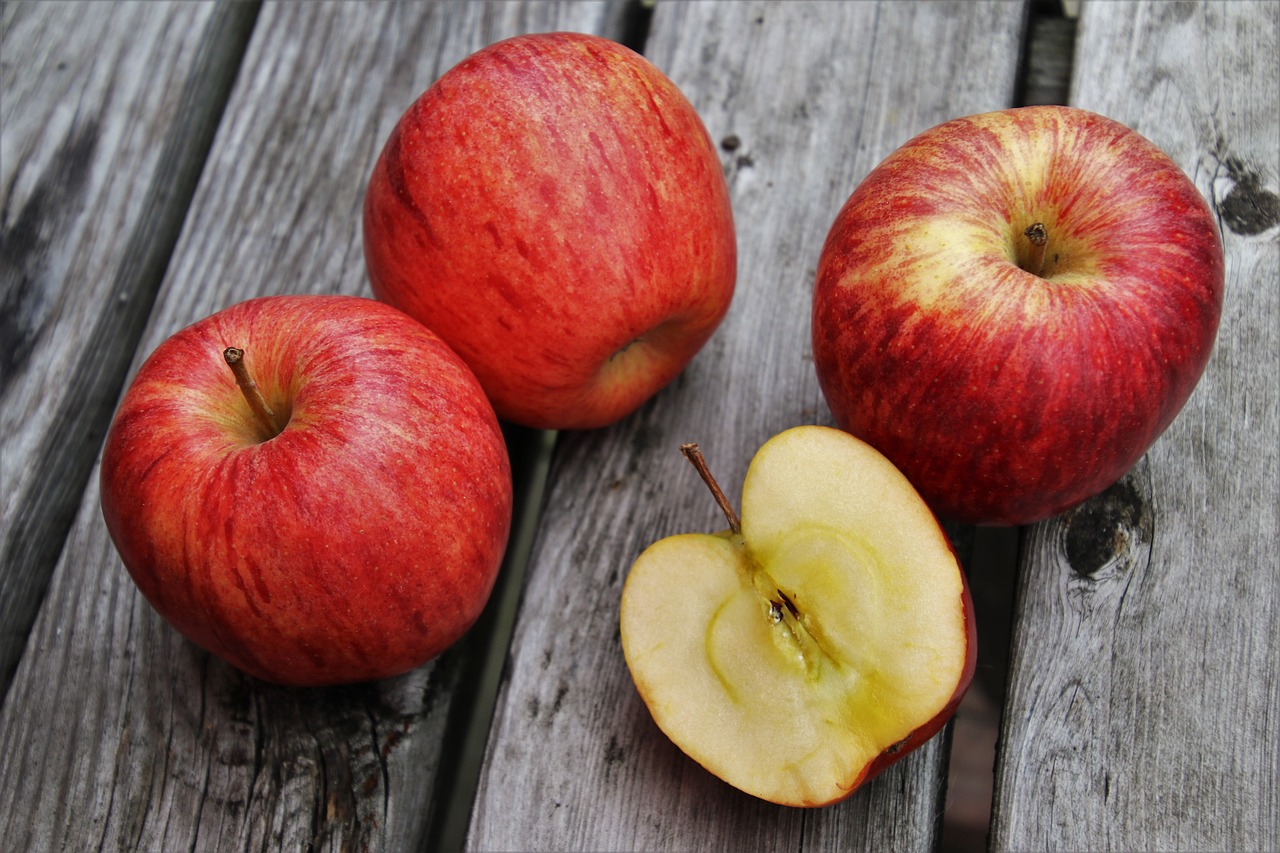
Balancing Protein Sources
Finding the right balance of protein sources in your pet's diet is not just a matter of variety; it's essential for their overall health and vitality. Just like we need a mix of nutrients to thrive, our furry friends require a well-rounded approach to their meals. Think of it as a colorful palette—each protein source adds a different hue that contributes to the masterpiece of your pet's nutrition. So, how do we create this balanced diet? Let’s dive into some key considerations.
First and foremost, it's important to understand that the needs of pets can vary significantly based on factors such as age, breed, and activity level. For instance, an active dog might require more protein than a senior cat lounging on the couch all day. To ensure a balanced intake, you can categorize protein sources into three main groups: animal-based proteins, plant-based proteins, and commercial protein options. Each of these categories offers unique benefits that can complement one another.
When formulating a diverse diet, consider incorporating a mix of these protein sources. For example, you might combine chicken (an animal-based protein) with lentils (a plant-based protein) to create a nutritionally rich meal. This not only adds variety but also ensures that your pet receives a broader spectrum of amino acids, which are the building blocks of protein. Additionally, don’t forget to factor in the quality of the ingredients. High-quality proteins can make a significant difference in your pet’s health, affecting everything from energy levels to coat condition.
Another important aspect of balancing protein sources is portion control. Feeding your pet the right amount of each protein type will help prevent obesity and other health issues. You might want to consult with your veterinarian or a pet nutritionist to determine the ideal proportions for your specific pet. A general rule of thumb is to aim for a diet that consists of about 70% animal-based proteins and 30% plant-based proteins, but this can vary based on individual needs.
Finally, always remember that monitoring your pet's health is crucial when introducing new protein sources. Keep a close eye on their energy levels, coat condition, and overall well-being. If you notice any adverse reactions, such as digestive issues or changes in behavior, it may be time to reevaluate their diet. By being attentive and proactive, you can ensure that your pet enjoys a balanced and nutritious diet that supports their health for years to come.
- How often should I change my pet's protein sources? It's a good idea to rotate protein sources every few weeks to maintain variety and balance in their diet.
- Can I feed my pet only plant-based proteins? While plant-based proteins can be beneficial, they should not be the sole source of protein for pets, as they may lack certain essential amino acids found in animal-based proteins.
- What are the signs of a protein deficiency in pets? Common signs include lethargy, poor coat condition, and muscle wasting. If you notice these symptoms, consult your veterinarian.
Formulating a Diverse Diet
Creating a diverse diet for your pet is like painting a masterpiece; it requires a blend of colors, or in this case, protein sources, to achieve the perfect balance. When you think about it, just like we humans thrive on a variety of foods, our furry friends also benefit immensely from a mix of different proteins. A well-rounded diet not only satisfies their taste buds but also ensures they receive all the essential nutrients needed for their health and vitality.
To formulate a diverse diet, start by considering the different types of protein sources available. Animal-based proteins, such as chicken, beef, and fish, should be the cornerstone of your pet's meals. These proteins are packed with essential amino acids that support muscle growth and energy levels. However, don't overlook the benefits of incorporating plant-based proteins like legumes, grains, and vegetables. These can provide additional fiber and nutrients that animal proteins may lack.
When planning your pet's meals, think of it as a puzzle; each piece represents a different protein source. For example, you might combine chicken with lentils and sweet potatoes. This combination not only offers a variety of flavors but also ensures a balanced intake of proteins and other vital nutrients. The key is to rotate the protein sources regularly. This rotation can help prevent food sensitivities and keep your pet excited about mealtime.
Here’s a simple guideline to help you formulate a diverse diet:
- Choose one or two animal-based proteins as the main component of the meal.
- Add a plant-based protein for added fiber and nutrients.
- Incorporate vegetables for vitamins and minerals.
- Consider adding healthy fats, such as fish oil, to boost omega-3 fatty acids.
Moreover, don’t forget to consult with your veterinarian when making significant changes to your pet's diet. They can provide tailored advice based on your pet's specific health needs, age, and activity level. Regularly monitoring your pet's health is crucial, especially when introducing new protein sources. Keep an eye out for any changes in energy levels, coat condition, or overall well-being. If you notice any adverse reactions, it may be time to adjust the protein sources you're using.
In summary, formulating a diverse diet for your pet is all about balance and variety. By combining different protein sources and regularly rotating them, you can create meals that not only meet your pet's nutritional needs but also keep them happy and healthy. Remember, a well-fed pet is a happy pet!
Q: How often should I change my pet's protein sources?
A: It's a good idea to rotate protein sources every few weeks or so. This helps prevent food sensitivities and keeps your pet interested in their meals.
Q: Can I mix animal and plant proteins in the same meal?
A: Absolutely! Mixing animal and plant proteins can provide a balanced diet and ensure your pet gets a variety of nutrients.
Q: What should I do if my pet has food allergies?
A: Consult with your veterinarian to identify the allergens and develop a suitable diet plan that avoids those ingredients.
Q: Are there any specific proteins I should avoid?
A: Some pets may have sensitivities to certain proteins like beef or chicken. Always monitor your pet's reactions and consult your vet if you have concerns.
Monitoring Your Pet's Health
When it comes to ensuring your pet's well-being, monitoring their health is crucial, especially when introducing new protein sources into their diet. Think of it like being a detective in your pet's life; you need to observe, take notes, and sometimes even make deductions about what works best for them. Just like humans, pets can react differently to dietary changes, so keeping a watchful eye on their behavior and physical condition is essential.
First and foremost, pay attention to your pet's energy levels. Are they more playful and active, or do they seem lethargic? An increase in energy can indicate that they are responding well to the new protein source, while a decrease might suggest that something isn't quite right. Additionally, take note of their coat condition. A shiny, healthy coat is often a reflection of a well-balanced diet. If you notice any changes, such as dullness or excessive shedding, it could be a sign that the new protein isn't agreeing with them.
Another critical area to monitor is your pet's digestive health. Changes in stool consistency can provide valuable insights into how well your pet is digesting their food. For example, if you notice diarrhea or constipation, it may indicate that the new protein source is too rich or not suitable for their digestive system. Keeping a log of their bowel movements can help you identify patterns and make necessary adjustments.
To make things easier, consider creating a simple health monitoring table that you can fill out regularly. Here’s a basic example:
| Date | Energy Level | Coat Condition | Stool Quality | Notes |
|---|---|---|---|---|
| MM/DD/YYYY | High/Medium/Low | Shiny/Dull | Normal/Loose/Hard | Any additional observations |
Finally, don't forget the importance of regular veterinary check-ups. Your vet can provide professional insights and recommendations tailored to your pet's specific needs. They might suggest blood tests or other diagnostics to ensure that your pet is thriving on their new diet. Remember, being proactive about your pet's health can prevent potential issues down the line.
In conclusion, monitoring your pet's health is not just about observing changes; it's about being an active participant in their dietary journey. By keeping an eye on their energy, coat, digestion, and consulting with your veterinarian, you can ensure that your furry friend is getting the best nutrition possible.
- How often should I monitor my pet's health after changing their diet? It's advisable to keep an eye on them for at least a few weeks after introducing new protein sources to observe any changes.
- What signs indicate my pet is having a negative reaction to a new protein? Look for symptoms like lethargy, changes in coat quality, digestive issues, or unusual behaviors.
- Should I consult a vet before changing my pet's diet? Yes, it's always a good idea to consult with a veterinarian to ensure that the new diet meets your pet's specific nutritional needs.
Frequently Asked Questions
- Why is protein variety important for my pet?
Protein variety is essential for your pet's overall health because different protein sources provide unique nutrients. Just like we benefit from a diverse diet, pets thrive on a mix of proteins that support muscle development, energy levels, and overall well-being. A varied protein intake can also help prevent allergies and sensitivities.
- How do I know my pet's protein needs?
Determining your pet's protein needs depends on factors like age, size, and activity level. For example, puppies and kittens require more protein for growth, while older pets may need a balanced amount to maintain muscle mass. Consulting with your veterinarian can help you assess your pet's specific requirements for a balanced diet.
- What are the best animal-based protein sources for pets?
Some of the best animal-based protein sources include chicken, beef, lamb, and fish. These proteins are rich in essential amino acids that support your pet's health. Fish, in particular, is a great source of omega-3 fatty acids, which promote healthy skin and a shiny coat.
- Can I include plant-based proteins in my pet's diet?
Absolutely! Plant-based proteins, such as legumes, grains, and vegetables, can complement animal proteins in your pet's diet. They provide additional nutrients and fiber, which can aid digestion. However, it's essential to ensure that your pet receives a balanced diet that meets their protein needs.
- How can I create a balanced diet for my pet?
To create a balanced diet, mix various protein sources, both animal and plant-based. Start by incorporating different meats and adding in some legumes or vegetables. Keep an eye on your pet's health and adjust the diet as necessary to ensure they are getting all the nutrients they need.
- What should I monitor when introducing new protein sources?
When introducing new protein sources, it's crucial to monitor your pet's health closely. Look for changes in energy levels, coat condition, and overall behavior. If you notice any adverse reactions, such as gastrointestinal issues or skin problems, consult your veterinarian for guidance.

